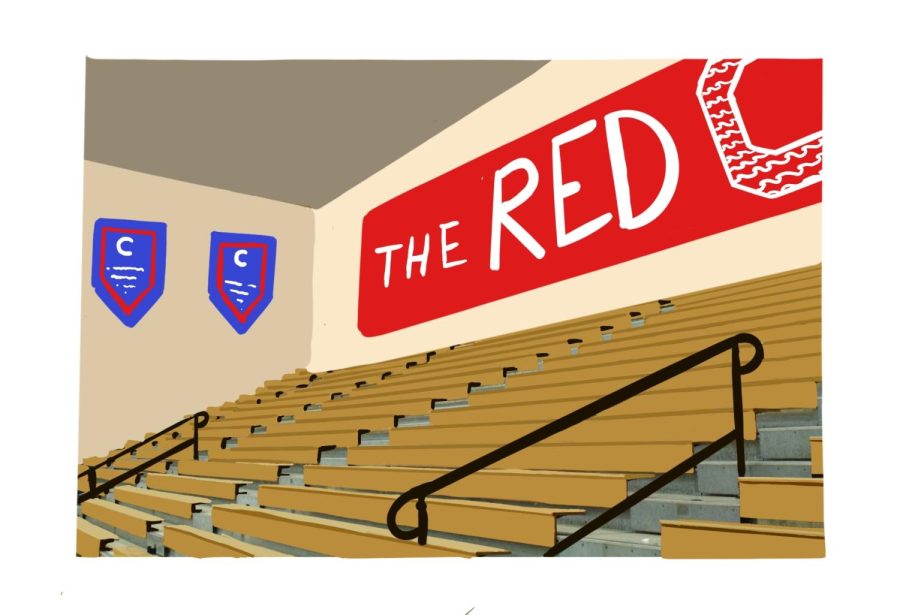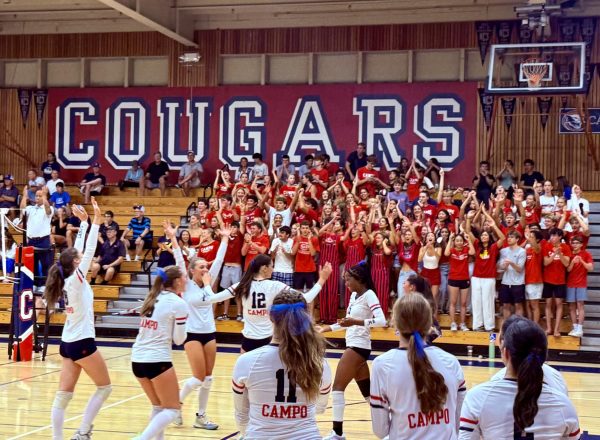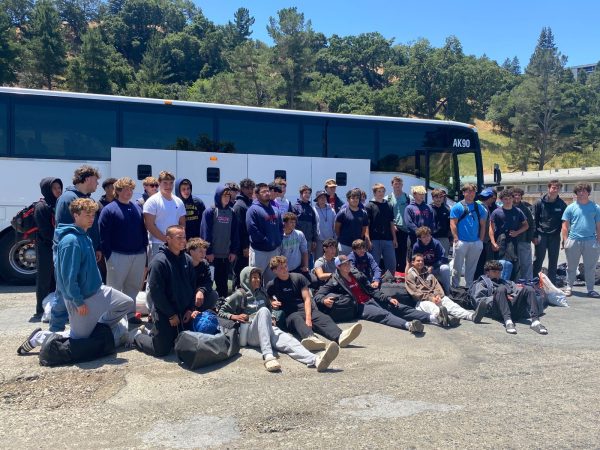Regulating Spectators at Indoor Games Impacts Athletes
Empty Stands for Games.
Campolindo had banned spectators from all indoor sports games once again, not including family members. To some, this was an educated decision that would result in an improvement in our schools’ rising COVID-19 cases. To others, it was a devastating loss of school spirit, potentially affecting teams’ attitudes during games.
Either way, Campo had been strict with their decision and kept these rules in place for the rest of these indoor seasons. Because of this drastic change in environment, fans and players were worried about how their lack of presence might affect focus, effort, and even strategy in games that they could no longer attend.
Senior and varsity boys’ basketball captain Aidan Mahaney said, “It’s such a weird feeling [to not have fans in the stands] because we are so used to having people there…it’s really disappointing because we know what we deserve as a team.”
Spectators provide a much needed rush of adrenaline and entertainment that provides games with a high intensity that can’t be replicated or replaced. Without this, teams can lose this energy created and not perform to the best of their abilities. Whether that is losing more games or just not playing as well as they normally would.
Some athletes feed off of this adrenaline, harnessing the extra strength and endurance it can give you, sharpening their focus amid the pressure. However, this rush can sometimes be counterproductive in sports that require full control over your fine motor skills. Having such a large audience can produce stress and anxiety in some people that cause them to perform worse than they normally do. Subtracting this element, for good or bad, might alter the performances of these teams.
Humans naturally form associations between sight and sound, so players might be momentarily caught off guard by the lack of cheering or support from the stands when they make an impressive play. This could distract players and alter their concentration, which ultimately detracts from their performance.
This major change in environment is felt most during home games where teams supposedly have home-field advantage. The advantage in question is created by the mass of supporters that show up and create an unmistakable energy that allows the team to thrive. Without this, teams playing on their home turf with barely anybody in the stands can take more of a toll on the players’ motivation than playing at another school would.
Athletes are being forced to develop new strategies, such as relying on their teammates for the support they would normally receive from the stands.
Mahaney said, “I don’t think there is anything that can really provide the same atmosphere that fans create, which is why we have been pushing so hard to get fans back… Our bench has done an awesome job at cheering and helping us out.”
Just this past Monday, January 31, Campolindo has modified their rules and are allowing a limited number of spectators to attend games if they buy a ticket in advance. This is to help control the number of people attending and also to add more school spirit to these games.
Indoor athletes are very grateful to end this season with an abundance of school spirit because, “there are 0 benefits to having no fans and we can’t wait to have as many fans as we can at every game,” said Mahaney.
Your donation will support the student journalists of Campolindo High School's The Claw. Your contribution will allow us to produce more issues and cover our annual website hosting costs.

Kiera Roux is a 1st-year Journalism student and senior at Campolindo. She wishes to pursue a career in the social sciences, analyzing and understanding...



